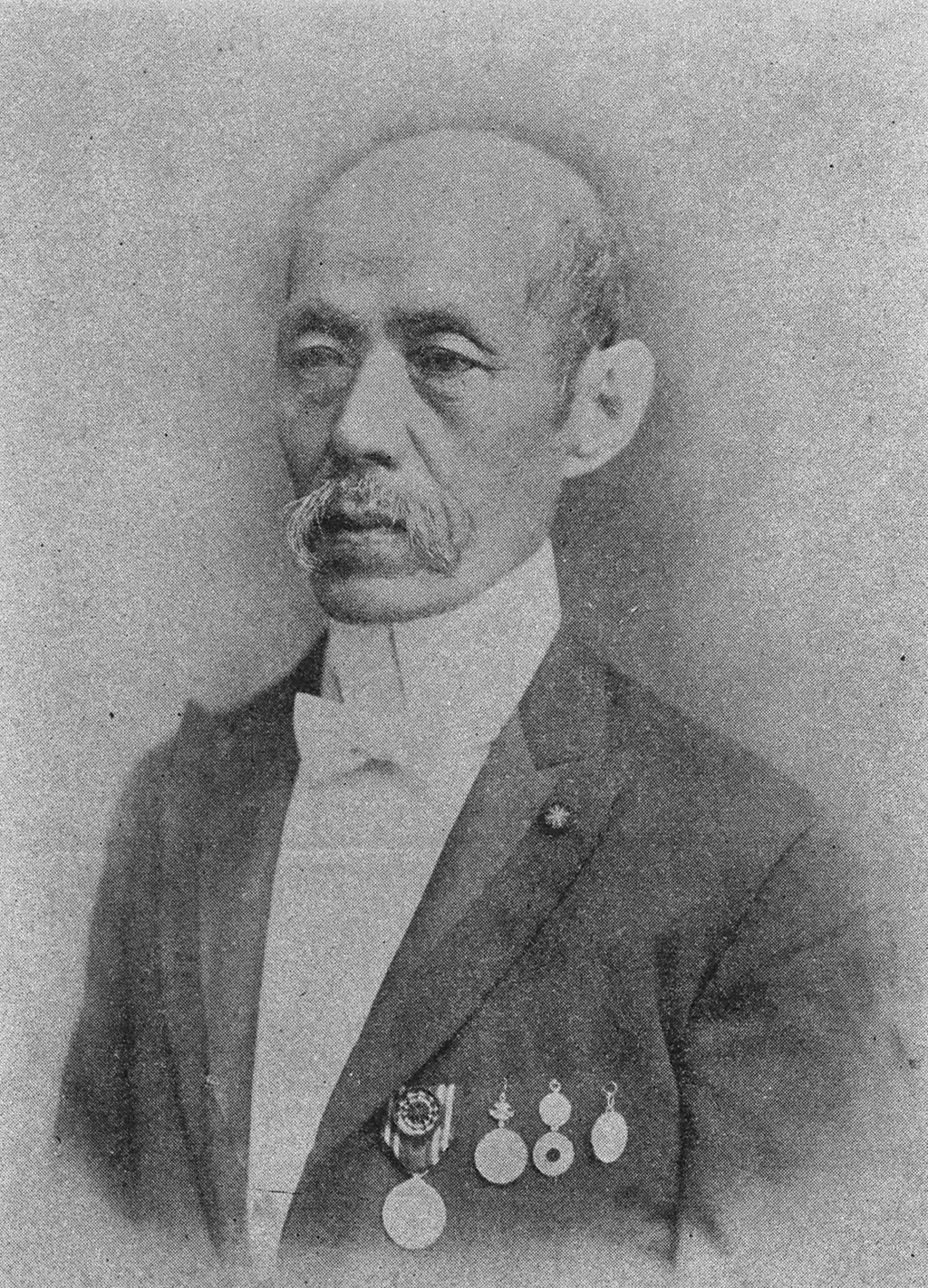|
Tokyo Kasei University
is a private university in Itabashi, Tokyo, Japan, established in 1949. The predecessor of the school was founded in 1881. Tokyo Kasei University is a women's university, with a focus on education in the fields of home economics, the humanities, nursing, and child development. History Tokyo Kasei University was founded during the Meiji Era by Tatsugoro Watanabe, an educator born in Chiba prefecture, Japan. The university began as a sewing school called ''Wayo Saihou Denshujo'' (The School for Japanese and Western Seamstress Techniques), with the intention of helping young women to gain academic knowledge and skills in a time when half as many women as men attended school. Tatsugoro Watanabe taught sewing, along with basic academic skills, including reading, writing, and mathematics. In 1949, the school gained university status, and celebrated its 135th anniversary in 2016. The motto of the university is "Affection, Diligence, and Intelligence", and dates from 1951 when it was ch ... [...More Info...] [...Related Items...] OR: [Wikipedia] [Google] [Baidu] |
Private University
Private universities and private colleges are institutions of higher education, not operated, owned, or institutionally funded by governments. They may (and often do) receive from governments tax breaks, public student loans, and grant (money), grants. Depending on their location, private universities may be subject to government regulation. Private universities may be contrasted with public university, public universities and national university, national universities. Many private universities are nonprofit organizations. Africa Egypt Egypt currently has 20 public universities (with about two million students) and 23 private universities (60,000 students). Egypt has many private universities, including The American University in Cairo, the German University in Cairo, the British University in Egypt, the Arab Academy for Science, Technology and Maritime Transport, Misr University for Science and Technology, Misr International University, Future University in Egypt and ... [...More Info...] [...Related Items...] OR: [Wikipedia] [Google] [Baidu] |
Language Learning
Language acquisition is the process by which humans acquire the capacity to perceive and comprehend language (in other words, gain the ability to be aware of language and to understand it), as well as to produce and use words and sentences to communicate. Language acquisition involves structures, rules and representation. The capacity to use language successfully requires one to acquire a range of tools including phonology, morphology, syntax, semantics, and an extensive vocabulary. Language can be vocalized as in speech, or manual as in sign. Human language capacity is represented in the brain. Even though human language capacity is finite, one can say and understand an infinite number of sentences, which is based on a syntactic principle called recursion. Evidence suggests that every individual has three recursive mechanisms that allow sentences to go indeterminately. These three mechanisms are: ''relativization'', ''complementation'' and ''coordination''. There are two main ... [...More Info...] [...Related Items...] OR: [Wikipedia] [Google] [Baidu] |
Adult Education
Adult education, distinct from child education, is a practice in which adults engage in systematic and sustained self-educating activities in order to gain new forms of knowledge, skills, attitudes, or values. Merriam, Sharan B. & Brockett, Ralph G. ''The Profession and Practice of Adult Education: An Introduction''. Jossey-Bass, 2007, p. 7. It can mean any form of learning adults engage in beyond traditional schooling, encompassing basic literacy to personal fulfillment as a lifelong learner. and to ensure the fulfillment of an individual. In particular, adult education reflects a specific philosophy about learning and teaching based on the assumption that adults can and want to learn, that they are able and willing to take responsibility for the learning, and that the learning itself should respond to their needs. Driven by what one needs or wants to learn, the available opportunities, and the manner in which one learns, adult learning is affected by demographics, globalizat ... [...More Info...] [...Related Items...] OR: [Wikipedia] [Google] [Baidu] |
Wayang
, also known as ( jv, ꦮꦪꦁ, translit=wayang), is a traditional form of puppet theatre play originating from the Indonesian island of Java. refers to the entire dramatic show. Sometimes the leather puppet itself is referred to as . Performances of wayang puppet theatre are accompanied by a ''gamelan'' orchestra in Java, and by '' gender wayang'' in Bali. The dramatic stories depict mythologies, such as episodes from the Hindu epics the ''Ramayana'' and the ''Mahabharata'', as well as local adaptations of cultural legends. Traditionally, a is played out in a ritualized midnight-to-dawn show by a ''dalang'', an artist and spiritual leader; people watch the show from both sides of the screen. performances are still very popular among Indonesians, especially in the islands of Java and Bali. performances are usually held at certain rituals, certain ceremonies, certain events, and even tourist attractions. In ritual contexts, puppet shows are used for prayer rituals (held in ... [...More Info...] [...Related Items...] OR: [Wikipedia] [Google] [Baidu] |
Indonesian Culture
The culture of Indonesia has been shaped by long interaction between original indigenous customs and multiple foreign influences. Indonesia is centrally-located along ancient trading routes between the Far East, South Asia and the Middle East, resulting in many cultural practices being strongly influenced by a multitude of eastern religions, religions, including Buddhism, Christianity, Confucianism, Hinduism, and Islam, all strong in the major trading cities. The result is a complex cultural mixture, often different from the original indigenous cultures. Examples of the fusion of Islam with Hinduism include Javanese Abangan belief. Balinese dances have stories about ancient Buddhist and Hindu Monarchy, kingdoms, while Islamic art forms and architecture are present in Sumatra, especially in the Minangkabau people, Minangkabau and Aceh regions. Traditional art, music and sport are combined in a martial art form called Pencak Silat. The Western world has influenced Indonesia in sci ... [...More Info...] [...Related Items...] OR: [Wikipedia] [Google] [Baidu] |
Taiwanese Culture
The culture of Taiwan is a blend of Confucian Chinese and indigenous Taiwanese cultures. Despite the overwhelming traditional Chinese influence, Japanese culture has influenced Taiwanese culture as well. The common socio-political experience in Taiwan gradually developed into a sense of Taiwanese cultural identity and a feeling of Taiwanese cultural awareness, which has been widely debated domestically. Reflecting the continuing controversy surrounding the political status of Taiwan, politics continues to play a role in the conception and development of a Taiwanese cultural identity, especially in the prior dominant frame of a Taiwanese and Chinese dualism. In recent years, the concept of Taiwanese multiculturalism has been proposed as a relatively apolitical alternative view, which has allowed for the inclusion of mainlanders and other minority groups into the continuing re-definition of Taiwanese culture as collectively held systems of meaning and customary patterns of thought ... [...More Info...] [...Related Items...] OR: [Wikipedia] [Google] [Baidu] |
Guatemalan Culture
The culture of Guatemala reflects strong Mayan and Spanish influences and continues to be defined as a contrast between poor Mayan villagers in the rural highlands, and the urbanized and relatively wealthy mestizos population (known in Guatemala as '' ladinos'') who occupy the cities and surrounding agricultural plains. Cuisine Guatemalan cuisine reflects the multicultural nature of Guatemala, in that it involves food that differs in taste depending on the region. Guatemala has 22 departments (or divisions), each of which has different food varieties. For example, Antigua Guatemala is well known for its candy that makes use of many local ingredients: fruits, seeds and nuts, honey, condensed milk and other traditional sweeteners. Antigua's candy is popular with tourists. Many traditional foods are based on Maya cuisine and prominently feature corn, chilis and beans. Various dishes may have the same name as dishes from a neighboring country but in fact be quite different. For ... [...More Info...] [...Related Items...] OR: [Wikipedia] [Google] [Baidu] |
Japanese History
The first human inhabitants of the Japanese archipelago have been traced to prehistoric times around 30,000 BC. The Jōmon period, named after its cord-marked pottery, was followed by the Yayoi period in the first millennium BC when new inventions were introduced from Asia. During this period, the first known written reference to Japan was recorded in the Chinese ''Book of Han'' in the first century AD. Around the 3rd century BC, the Yayoi people from the continent immigrated to the Japanese archipelago and introduced iron technology and agricultural civilization. Because they had an agricultural civilization, the population of the Yayoi began to grow rapidly and ultimately overwhelmed the Jōmon people, natives of the Japanese archipelago who were hunter-gatherers. Between the fourth to ninth century, Japan's many kingdoms and tribes gradually came to be unified under a centralized government, nominally controlled by the Emperor of Japan. The imperial dynasty established at ... [...More Info...] [...Related Items...] OR: [Wikipedia] [Google] [Baidu] |
Electronic Journal
An academic journal or scholarly journal is a periodical publication in which scholarship relating to a particular academic discipline is published. Academic journals serve as permanent and transparent forums for the presentation, scrutiny, and discussion of research. They nearly-universally require peer-review or other scrutiny from contemporaries competent and established in their respective fields. Content typically takes the form of articles presenting original research, review articles, or book reviews. The purpose of an academic journal, according to Henry Oldenburg (the first editor of ''Philosophical Transactions of the Royal Society''), is to give researchers a venue to "impart their knowledge to one another, and contribute what they can to the Grand design of improving natural knowledge, and perfecting all Philosophical Arts, and Sciences." The term ''academic journal'' applies to scholarly publications in all fields; this article discusses the aspects common to all ac ... [...More Info...] [...Related Items...] OR: [Wikipedia] [Google] [Baidu] |
Library
A library is a collection of materials, books or media that are accessible for use and not just for display purposes. A library provides physical (hard copies) or digital access (soft copies) materials, and may be a physical location or a virtual space, or both. A library's collection can include printed materials and other physical resources in many formats such as DVD, CD and cassette as well as access to information, music or other content held on bibliographic databases. A library, which may vary widely in size, may be organized for use and maintained by a public body such as a government; an institution such as a school or museum; a corporation; or a private individual. In addition to providing materials, libraries also provide the services of librarians who are trained and experts at finding, selecting, circulating and organizing information and at interpreting information needs, navigating and analyzing very large amounts of information with a variety of resources. Li ... [...More Info...] [...Related Items...] OR: [Wikipedia] [Google] [Baidu] |
Kasei08
Kasei () is the Japanese word for Mars. It may refer to: Places * Kasei Valles, a canyon on Mars * Kasei, Kenya, a village in Kenya * Kasei, Ghana, a village in Ghana Transportation * Mitsubishi Kasei, a World War II aircraft engine used on many Japanese warplanes * Kasei Station, a train station on the Fujikyuko Line in Tsuru, Yamanashi, Japan * Toritsu-Kasei Station, a train station on the Seibu Shinjuku Line in Nakano, Tokyo, Japan Educational institutions * Tokyo Kasei-Gakuin University, a private university in Tokyo * Tokyo Kasei-Gakuin Junior College, a women's university in Tokyo * Tokyo Kasei University, a private university in Tokyo Other * Asahi Kasei is a multinational Japanese chemical company. Its main products are chemicals and materials science. It was founded in May 1931, using the paid in capital of Nobeoka Ammonia Fiber Co., Ltd, a Nobeoka, Miyazaki based producer of ammonia, nit ..., a Japanese chemical conglomerate * Rakuto Kasei, a Japanese mul ... [...More Info...] [...Related Items...] OR: [Wikipedia] [Google] [Baidu] |



.jpg)




